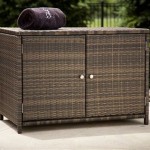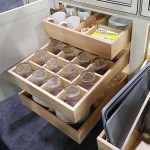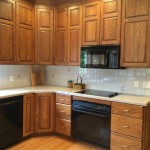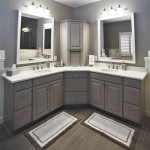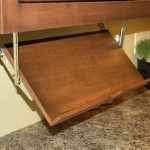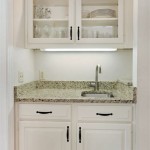How to Measure for Cabinet Door Knobs
Cabinet door knobs are an essential part of any kitchen or bathroom. They provide a convenient way to open and close cabinets, and they can also add a touch of style to your space. However, choosing the right knobs can be tricky, especially if you're unsure how to measure them properly. Incorrect measurements can lead to knobs that are too small or too large, which can affect both the functionality and aesthetics of your cabinets.
This article will guide you through the process of measuring for cabinet door knobs, ensuring you select the right size for your cabinets. With the right measurements, you'll be able to choose knobs that enhance the look and functionality of your kitchen or bathroom.
Understanding the Different Components
Before diving into the measurement process, it's important to understand the different components of a cabinet door knob. This will help you understand what to measure and why. The key components are:
- Knob: This refers to the visible round or decorative element on the cabinet door that you physically turn to open the door.
- Rose: The rose is the circular or square plate that sits behind the knob and covers the mounting hole in the cabinet door. It provides a decorative element and conceals the screw that attaches the knob to the door.
- Backset: The backset is the distance between the center of the knob and the edge of the cabinet door. This measurement determines how far the knob will protrude from the door.
- Projection: The projection refers to the distance the knob protrudes from the cabinet door. It is the combined distance of the knob and the rose.
Essential Measurements for Choosing Cabinet Door Knobs
Now, let's move onto the actual measurement process. To choose the right knob for your cabinets, you need to measure the following:
1. Backset Measurement
The backset is the most crucial measurement when selecting cabinet door knobs. It determines the placement of the knob relative to the edge of the door. To measure the backset, follow these steps:
- Locate Existing Knob: If you're replacing an existing knob, locate the center of the old knob.
- Measure to Door Edge: Measure the distance from the center of the knob to the edge of the cabinet door. This measurement is your backset.
- Standard Backset: The most common backset is 2.5 inches. However, you can find knobs with different backsets, such as 2 3/8 inches or 3 inches.
2. Rose Size
The size of the rose is another crucial measurement. Choosing a rose that's too small may expose the screw that attaches the knob to the door, while a rose that's too large could cover up decorative features on the cabinet door. To determine the right rose size, follow these steps:
- Measure Existing Rose: If you're replacing an existing knob, measure the diameter of the existing rose. This will give you a starting point for your new rose size.
- Consider Cabinet Style: When choosing a rose size, consider the style of your cabinets. For example, a larger rose might be appropriate for traditional cabinets, while a smaller rose could be more suitable for modern cabinets.
- Observe Current Knob: The current knob's style and size can provide hints about the appropriate rose size.
Additional Considerations
In addition to the backset and rose size, several other factors can influence your cabinet door knob selection:
1. Cabinet Door Thickness
The thickness of your cabinet doors can affect the length of the screws needed to secure the knob. If your doors are exceptionally thick or thin, ensure the chosen knob's screws are long enough to reach through the door and securely attach the knob to the cabinet.
2. Cabinet Door Material
The material of your cabinet doors can impact the style and finish of the knob you choose. For example, solid wood doors might pair well with a traditional or ornate knob, while glass cabinet doors might benefit from a sleek, minimalist knob.
3. Knob Style
The style of your cabinet door knobs should complement the overall design of your kitchen or bathroom. Consider the style of your cabinets, countertops, and hardware when choosing knobs. You can opt for traditional knobs with ornate detailing or modern knobs with simple lines and minimalist designs.
4. Finish
The finish of your cabinet door knobs should complement the existing hardware in your kitchen or bathroom. Choose a finish that complements the faucet fixtures, handles, and other hardware. Popular cabinet door knob finishes include brushed nickel, polished chrome, oil-rubbed bronze, and satin brass.

How To Measure Kitchen Cabinet Handles The Handmade Handle Company
Cabinet Hardware Sizing Guide The Knobbery Door Bath Accessories Faucets Furniture Knobs And Pulls

Hardware Guide

Hardware Guide
Cabinet Hardware Sizing Guide The Knobbery Door Bath Accessories Faucets Furniture Knobs And Pulls

How To Choose Hardware Pull Size For Your Cabinets

The Ultimate Guide For Cabinet Hardware Placement And Sizing Kitchen Inspiration Design

Cabinet Hardware Placement Guide
Cabinet Hardware Sizing Guide The Knobbery Door Bath Accessories Faucets Furniture Knobs And Pulls

What Size Knob Or Pull Should I Get The
Related Posts

